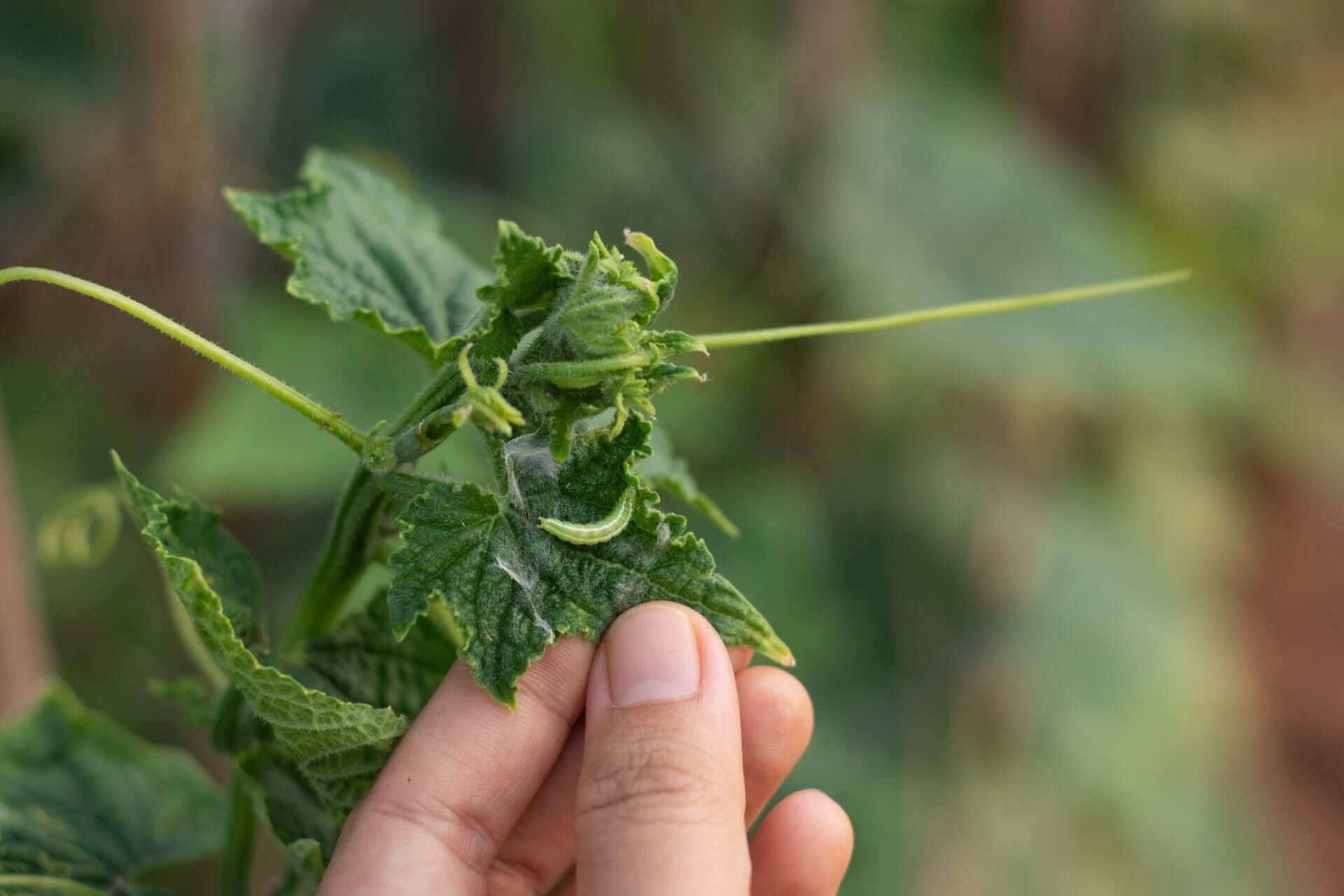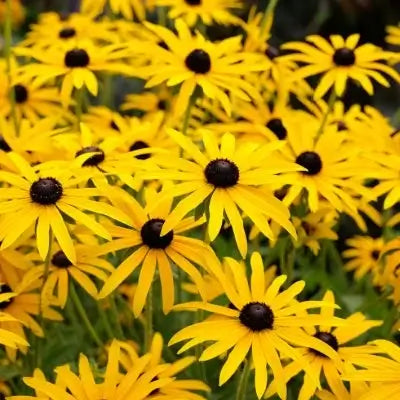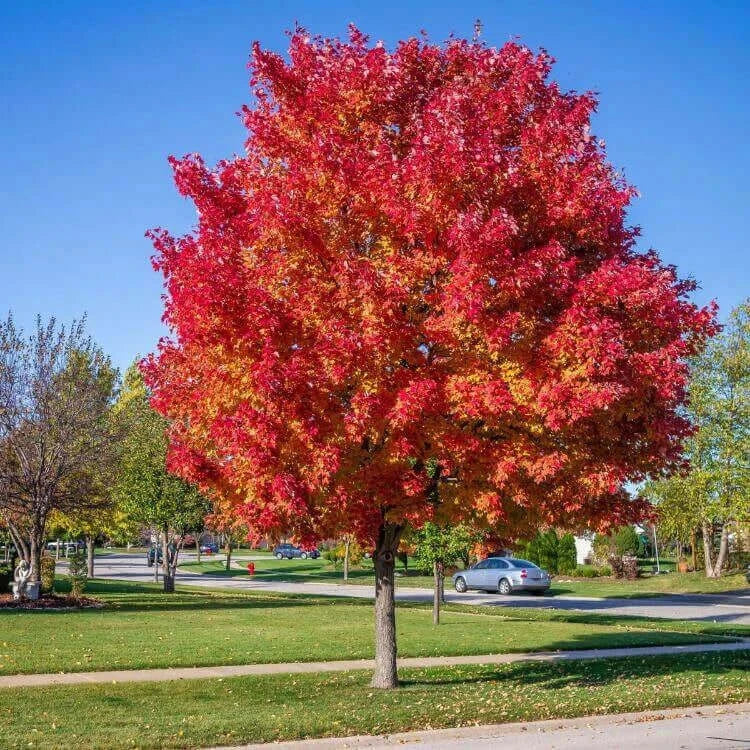10 Best Privacy Plants for Your Yard
Creating a private and tranquil outdoor space is essential for many homeowners, offering a sanctuary away from the hustle and bustle of daily life. Privacy plants are a fantastic way to achieve this goal, as they provide seclusion and add beauty and natural appeal to your yard. Whether you're looking to shield your yard from prying eyes, reduce noise, or create a serene environment, selecting the right privacy plants is crucial. This article explores the ten best privacy plants to transform your yard into a secluded oasis.
Arborvitae (Thuja spp.)Arborvitae, also known as Thuja or "green giants," is a popular choice for creating privacy hedges. These evergreen trees have dense foliage and proliferate, making them an excellent option for quick results. They come in various cultivars, allowing you to choose the right size and shape for your yard. Arborvitae requires regular pruning to maintain its shape and density, but its lush green foliage offers year-round privacy and aesthetics.
Bamboo (Bambusa spp.)
Bamboo is an exceptional option for creating a natural and exotic privacy screen. Many bamboo varieties are available, some of which can increase and form a dense barrier. However, choosing non-invasive clumping bamboo species is essential to prevent them from taking over your yard. Bamboo offers a modern and Zen-like aesthetic while also providing excellent sound insulation.
Leyland Cypress (Cupressocyparis leylandii)
This cypress is a fast-growing evergreen tree often used for privacy hedges. Its tall, conical shape and vibrant green color make it a favorite among homeowners looking to establish a dense and effective barrier. However, it's important to note that Leyland cypress requires regular pruning and maintenance to prevent overgrowth and maintain its visual appeal.
Boxwood Are Versatile Shrubs Great For Privacy
Boxwoods are classic and versatile shrubs that can be shaped into various forms, making them suitable for formal and informal privacy screens. Their dense foliage and slow growth rate make them an excellent choice for defining outdoor spaces. Boxwoods are available in different sizes and shapes, allowing you to create a custom privacy hedge that complements your yard's design.
Holly (Ilex spp.)
Holly shrubs are known for their glossy, spiky leaves and vibrant berries, which add visual interest to your yard while providing privacy. Depending on your desired look, they can be pruned into dense hedges or left to grow naturally. Holly species are popular choices for creating a lush and inviting privacy screen.
Privet (Ligustrum spp.)
Privet is a hardy and adaptable shrub that can be grown as a dense hedge. Its rapid growth rate and ability to tolerate pruning make it an attractive option for homeowners seeking a quick privacy solution. Privet hedges can be trimmed into neat shapes, adding a touch of formality to your outdoor space.
Cypress (Cupressus spp.)
Cypress trees are revered for their tall and slender profiles, making them perfect for vertical privacy screens. Their columnar growth habit and evergreen foliage contribute to an elegant and sophisticated appearance. Cypress trees can be spaced closely to form an effective privacy barrier that enhances your yard's aesthetic.
Emerald Green Arborvitae (Thuja occidentalis 'Smaragd')
Emerald Green Arborvitae is a specific arborvitae cultivar valued for its narrow and compact form. It's an excellent choice for smaller yards where space is limited. The dense foliage of this cultivar provides a lush and attractive privacy screen, and its slower growth rate means less frequent pruning.
Japanese Laurel (Aucuba japonica)
Japanese Laurel is a unique privacy plant with large, leathery leaves in various shades, including green and variegated. It's a shade-tolerant shrub that can thrive in areas with limited sunlight, making it a versatile choice for different yard conditions. The foliage of the Japanese Laurel adds texture and interest to your privacy screen.
Rose of Sharon (Hibiscus syriacus)
Rose of Sharon is a deciduous shrub known for its stunning, showy flowers that bloom during summer. While it may not provide year-round privacy, its growth habit and colorful blooms can create an inviting and beautiful screen during the warmer seasons. It's an excellent option for homeowners who want privacy and a burst of color in their yards.
Privacy plants offer a harmonious blend of functionality and aesthetics for your yard
There's a wide range of options, from evergreen trees that provide year-round coverage to deciduous shrubs that offer seasonal beauty. Consider the size of your yard, the sunlight it receives, and the maintenance level you're comfortable with when selecting the best privacy plants. By carefully choosing and nurturing these plants, you can create a private outdoor retreat that enhances your living space and brings you closer to nature.
In an era where personal space is increasingly valuable and cherished, privacy has taken on a new level of significance. Once open and exposed, our yards have transformed into extensions of our living spaces, beckoning for solace and aesthetic delight. Enter privacy plants, the green guardians that seamlessly merge functionality with beauty, offering a harmonious blend that transforms outdoor spaces into tranquil sanctuaries.
Privacy is no longer a mere luxury; it has become a necessity. As neighborhoods grow denser and living spaces get smaller, the need to create secluded oases within our yards has never been more pressing. It is where the ingenious idea of privacy plants comes into play. Instead of cold, uninviting walls or fences, these living barriers provide a soft, natural, and eco-friendly solution that pleases the eye while serving an essential purpose.
One critical advantage of privacy plants is their versatility. With an extensive array of species, homeowners can tailor their green screens to suit their preferences and local climate. From towering evergreens like Arborvitae and Leyland cypress to the graceful elegance of bamboo, there's a plant to complement every aesthetic vision. These plants can be strategically placed to block unsightly views, buffer noise, and prevent prying eyes from intruding upon your personal space.
Yet, privacy plants are more than mere functional barriers. They invite a sense of tranquility and serenity into your outdoor haven. The rustling leaves, vibrant flowers, and gentle swaying of these botanical walls create an immersive experience that resonates with the soul. They redefine the concept of a garden, turning it from a static collection of plants into a living, breathing tapestry that evolves with the seasons.
Incorporating privacy plants into your landscape design is akin to conducting a symphony. The arrangement of plants, varying heights, colors, and textures plays a harmonious melody that captures the senses. Taller trees or shrubs at the periphery provide a shield against prying eyes, while shorter, ornamental plants closer to seating areas contribute to the overall aesthetic appeal. This orchestration of nature's elements ensures privacy and transforms your yard into a visual masterpiece.
Furthermore, privacy plants support local ecosystems and contribute to environmental sustainability. Native plant species attract local wildlife, from birds to butterflies, fostering biodiversity and enhancing the natural balance of your surroundings. Unlike conventional fences or walls, which contribute to a sense of detachment, privacy plants invite nature to coexist with your daily life, connecting you to the world.
Maintenance of privacy plants can be a smooth task. With proper planning and care, these green screens can flourish with minimal effort. Regular pruning, watering, and a well-thought-out fertilization schedule can keep your private plants healthy and lush. As they grow, they weave themselves into the fabric of your outdoor space, becoming living witnesses to the moments you cherish.
In conclusion, privacy plants embody the seamless blend of functionality and aesthetics in modern yard design. They offer an elegant solution to the pressing need for privacy in an increasingly interconnected world while elevating your outdoor haven's visual and sensory experience. So, whether you're seeking solitude, hosting a gathering, or simply indulging in the beauty of the outdoors, these verdant sentinels stand ready to transform your yard into a private paradise.
The Top Ways to Utilize Privacy Plants
A living barrier provides a practical privacy solution for your home and outdoor spaces without constructing solid fences or walls. Plant vegetation that provides both privacy through visual screening and ecological advantages for local biodiversity to transform your yard into a private sanctuary. A range of privacy plant options exists for any space size, from small gardens to large properties. The subsequent sections will cover multiple approaches to choosing and organizing natural screens and their upkeep to help create a calm and balanced outdoor space.
1. Assess Your Needs and Available Space
Ensure you understand your privacy needs and evaluate your available planting area before selecting plants. Are you aiming to obscure a window's view or create an area for private seating? Do you want to minimize traffic noise from a street close by or need protection against wind? The type of greenery you select depends on your needs, so identifying your goals will help you choose the best plants.
Document soil type and sunlight exposure alongside possible barriers like property lines and utility easements through accurate measurements. Collecting this information enables the identification of appropriate plant forms, such as trees or vines, and helps prevent future problems. Opt for slim or upward-growing plant species when space availability is restricted. A broader or layered planting strategy can help you achieve a park-like atmosphere when you have additional space.
2. Give priority to plant growth patterns rather than particular species.
Concentrate on understanding plant growth patterns and general traits instead of selecting specific plant types.
Evergreen Growth: A group of plants maintains their foliage throughout all seasons, ensuring yearly coverage.
Broadleaf or Needle-Based Foliage: To modify the appearance and density of your barrier, you can choose leaves with different shapes and textures.
Deciduous Characteristics: Deciduous plants provide an effective screen throughout most of the year, but you might need additional elements to achieve privacy in winter.
Clumping vs. Spreading Roots: Some plants grow in dense groups, making them more straightforward to manage, but others develop rapid-running stems.
Selecting plant varieties based on their key characteristics helps you choose plants that match your environmental conditions and visual desires while preventing you from becoming too attached to specific species names. Residents in regions with planting restrictions should seek information about plant categories commonly approved for landscaping applications.
3. Strategic Spacing and Layout
To create a practical living barrier, you must focus on the correct spacing and positioning of plant materials. Plants positioned too close together will fight over nutrients and water, which might weaken the whole row. When plants are spaced excessively far from one another, gaps will remain visible beyond the preferred duration. Study the full-grown width of each plant and position them so their mature canopies will merge seamlessly without creating an overcrowded look.
Using staggered planting rows allows individual plants in one row to occupy spaces between plants in adjacent rows. This approach results in a thicker visual barrier, speeding up attaining privacy. Stratifying plants by varying heights allows more significant properties to achieve a natural appearance and complete coverage.
4. Crafting a "Living Fence"
Planting privacy plants in a continuous row forms an effective boundary hedge. You can create privacy plant boundaries using formal or informal methods. In formal approaches, greenery receives regular trimming or shaping to ensure consistent height and density while making a tidy, well-manicured appearance. An informal hedge permits plants to grow naturally, creating a loose yet natural-looking display.
You can plant in the ground or construct trellises or frames to guide greenery vertically. Growing greenery vertically on trellises proves beneficial when dealing with limited space or creating a divider that maintains an open atmosphere. Choose support structures that can sustain mature vines and shrubs without breaking.
5. Dual Benefits: Windbreaks and Noise Reduction
Specific plant arrangements offer dual protection for outdoor space by blocking strong winds and reducing noise levels. Plant rows function as windbreaks by slowing down wind currents to safeguard delicate ornamental plants, vegetables, and seating areas from wind damage. Foliage acts as a natural sound barrier by absorbing and deflecting noise from traffic and neighboring areas. Create an effective wind and noise barrier by organizing plants with varying heights and foliage densities into different layers.
6. Maintenance and Long-Term Care
The health and appearance of your privacy screen depend on proper maintenance regardless of plant selection. Newly planted vegetation needs regular water until its roots fully develop. Mulch maintains soil moisture levels while preventing weed growth and maintaining consistent soil temperatures. Keep mulch away from the trunks and stems of plants to avoid rot.
To maintain plant health, you must regularly prune away branches that exhibit signs of disease or overcrowding while removing dead growth. Hedges or shaped plants require consistent trimming to sustain their intended appearance. When fertilizing your plants, choose balanced or slow-release formulas and apply them only in response to visible nutrient deficiency symptoms. Excess fertilization triggers weak plant growth, inviting pests and diseases to establish themselves.
7. Adapt and Personalize
Every property presents unique characteristics that align with individualized preferences. Different plant types, such as evergreen and deciduous varieties and tall or compact forms, create personalized privacy aesthetics. Combining plants with varying textures of foliage creates visual intrigue, and including seasonal flowers or ornamental grasses to show above the foliage improves your garden's aesthetic appeal. When choosing colors and shapes for plantings along with planting patterns, consider each element's functionality to achieve your design goals.
When designing your outdoor space, consider your home's interior viewpoints. Position your plantings strategically when windows face busy sidewalks or neighboring yards. For partial views of your surroundings, space out your plantings or select species that develop more open growth patterns. This can create a sheltered atmosphere while maintaining an open feel.











































































































